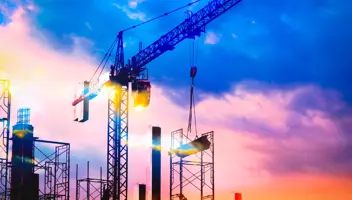There’s no getting away from the fact that building a residential development is often a lengthy process that requires the involvement of lots of stakeholders. However, it’s absolutely vital that a site is appropriately serviced so house purchasers have access to everyday services such as electricity, gas, drainage and sewerage.
As part of the servicing of plots, developers often grant rights to statutory undertakers to lay and install services and utilities. The documentation granting such rights will typically also provide the statutory undertaker with ongoing rights to repair, maintain and renew them.
However, it is not wise to assume that an agreement produced by a statutory undertaker is appropriate from a developer’s perspective, simply because it is stated as being in the statutory undertaker’s “standard form”. Often such agreements are heavily weighted in favour of the statutory undertaker. Each development site is different and there may be a need to consider bespoke issues within the documentation that do not hamper future development. For example, developers might want to ensure agreements have the flexibility to enable them to vary routes of service and utilities apparatus, which might be important in the event of any future remixing of a site.
It is important that legal advice is sought on these issues as early as possible. Often, a statutory undertaker will require the necessary legal agreements to be put in place before a connection can be made to the network. Instructing solicitors in advance and ensuring service providers are doing likewise can help make sure that the appropriate rights are documented, avoiding any issues with completion of the site.
It may also be the case that service and utilities infrastructure is transferred to a statutory undertaker after the energisation of a development site. A prime example is the adoption of Sustainable Urban Drainage (SUDs) systems by, and subsequent transfer to, Scottish Water. Scottish Water have recently changed their approach in respect of such acquisitions of land to do so by way of a statutory conveyance.
This process imposes obligations upon a statutory undertaker to accord with certain procedures, which may result in the transfer taking longer than usual. It also generally means the statutory undertaker acquires a title unencumbered by burdens or conditions. If there are still unsold or undeveloped plots within a development site which will need to connect to infrastructure situated within land which is to be subject to a statutory conveyance, it is important that steps are taken to ensure that this is addressed before it is too late.
So if you are working on a residential development it would be wise to ensure your legal advisors are made aware of any potential documentation to be put in place as soon as possible – or statutory undertakers could send your carefully laid plans to the morgue.
Written by
Related News, Insights & Events

Performance security part three: Retentions
The most widely utilised form of performance security, being retentions and some recent measures introduced in the UK to encourage transparency in retention practices in the construction industry.

Building Safety Levy (Scotland) Bill introduced
Introduced on 5 June 2025, the Building Safety Levy (Scotland) Bill proposes a new tax which, if passed, will be known as the Scottish Building Safety Levy ("the Levy").

Burness Paull reinforces energy team with appointment of leading renewables lawyer
03/06/2025
Burness Paull has appointed highly regarded renewables development lawyer Nicola Scott as a partner in its energy team.




